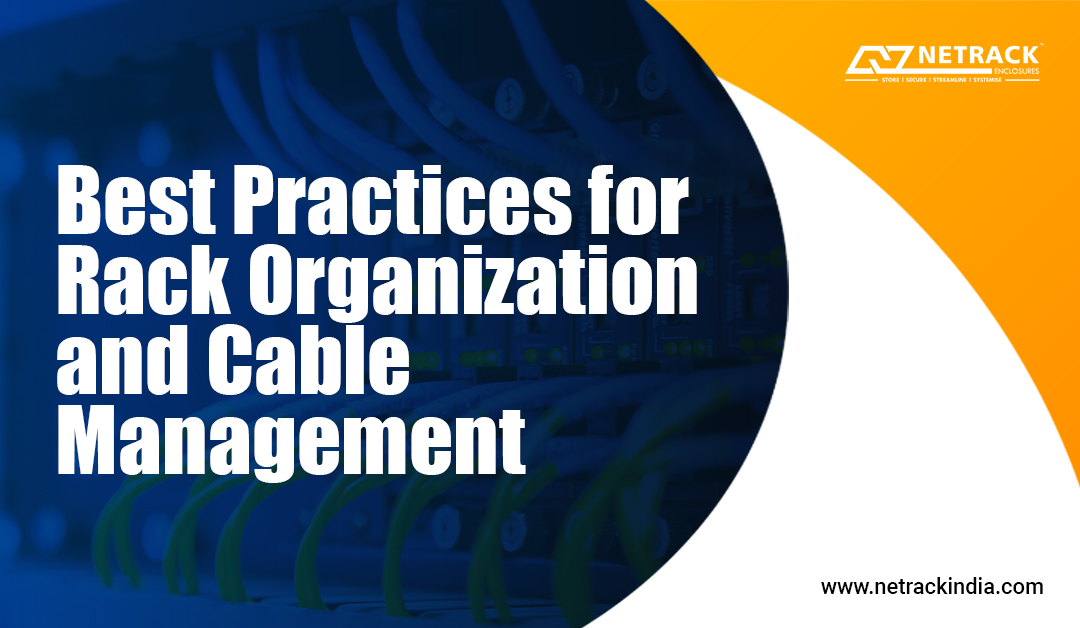
Best Practices for Rack Organization and Cable Management
Choosing the right rack is the key to diminishing system downtime and enhancing efficiency. A rack should be selected after assessing the current and future equipment needs, durability, and flexibility to accommodate the business requirements. Here, the correct rack dimensions ensure proper fit and compatibility with equipment, allow for efficient use of space, prevent overcrowding and heat buildup, simplify cable management, and enable easy access for maintenance and troubleshooting tasks.
Once the rack is installed, its organization and efficient cable management determines its success. Rack organization and cable management are used to arrange and manage equipment and cables within server racks or data center cabinets.
Understanding the concepts for enhanced application
Rack organization focuses on optimizing the physical layout of the equipment within the rack to ensure efficient use of space, proper airflow, and easy access for maintenance. This typically involves planning the arrangement of devices, mounting them securely, and adaption of necessary accessories for effective air-flow management.
Cable management, on the other hand, involves the management of cables connected to the equipment within the rack. The primary goals of cable management are to reduce cable clutter, maintain proper cable routing, and ensure that cables are organized and labeled for easy identification and maintenance. Bundling cables together, using cable ties or Velcro straps, using cable management arms or racks, and employing cable routing guides or channels to keep cables neat and organized are ways to manage cable effectively.
Explore the benefits of effective rack organization and cable management
The rack organization and cable management are crucial in maintaining an organized, efficient, and reliable data center or server room environment. Hence, it is essential to understand the best practices to ensure efficiency.
Properly organized racks allow for better airflow management, reducing the risk of overheating and improving the overall cooling efficiency of the equipment. Identifying and accessing specific devices or cables becomes easier, simplifying maintenance and troubleshooting tasks. Neatly managed cables minimize the risk of accidental cable disconnections, reducing the potential for network or equipment downtime. Adding or removing equipment and cables becomes convenient, facilitating future scalability and flexibility in the network infrastructure.
Best practices
One must embrace the following practices to achieve a well-organized rack environment with effective cable management, improving efficiency, easier maintenance, and reduced downtime.
- Consider your specific requirements and applications when selecting a rack in terms of size, depth, and load bearing capacity.
- The dimensions of the rack play a crucial role in effective cable management. Here are some guidelines:
Hub Room Application: For an 800mm width rack, opt for a 1000mm depth rack to accommodate all the equipment while managing the lower depth effectively.
Server or Network Application: Consider a 1200mm depth rack. The additional space on the backside enables better cable management and accommodates vertical PDUs. Similarly, a 60mm depth rack is suitable for server applications.
Data Center Application: Choose a rack with appropriate dimensions in a data center setting to ensure sufficient space for cable management and PDU hosting. Focus on proper cable management in the rear side to facilitate easy hot air exhaust.
- Plan and implement an organized cable routing system to minimize clutter and ensure ease of maintenance.
- Use cable management accessories like cable trays, vertical and horizontal cable organizers, and cable ties.
- Label all cables and document the connections to simplify troubleshooting and future maintenance.
- Use appropriate cable lengths to minimize excess cable clutter.
- Implement a color-coded system for different types of cables to enhance visual organization and ease identification.
Conclusion
We have reached a time when many data centers are experiencing a need for rapid growth; this has enhanced the need to rely upon the best practices to optimize efficiency and ensure significant operational cost savings.




